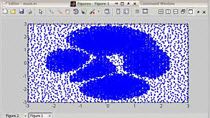Visualize Simulation Data in Simulink
Visualizing simulation data throughout the modeling process helps you understand, prototype, and tune your models. In Simulink®, you can select from different data visualization tools to suit your needs:
- Scope block: View connected signals in a separate compact window.
- Dashboard block library: Build an interactive interface to control and monitor the simulation by using graphical controls and displays.
- Record block: View and log signals to the workspace or a file.
- Simulation Data Inspector: Visualize, compare, and analyze data from multiple simulations in one place.
- Custom MATLAB® visualizations: Log simulation data to MATLAB and use MATLAB figures and charts to create custom visualizations.
- 3D Visualizations: Connect to Unreal Engine® to simulate and visualize the behavior of your Simulink models in prebuilt or custom 3D scenes.
Published: 5 Jan 2023





